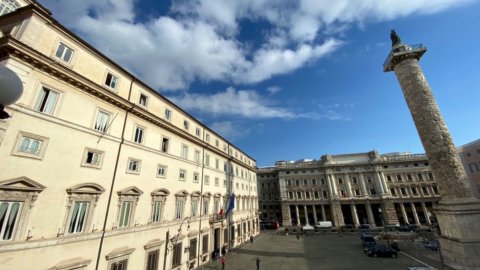Armenia, with an area of just under 30.000 km2 and 3 million inhabitants, it is the smallest and least populated former Soviet republic. The production system, based on a manufacturing sector specializing in machine tools, electronics, chemistry and textiles and intensive agriculture, entered a deep crisis with the collapse of the former Soviet giant. Like many Central and Eastern European markets, in the early 90s the economy went through a phase of hyperinflation. Under the pressure of these events, the Armenian government has launched a series of economic reforms aimed at promoting the market economy, sponsored by the IMF and other international bodies, in particular the World Bank and the EBRD. The program has seen the privatization of major industries, the liberalization of markets and the passage of legislation that supports foreign direct investment. These measures have favored the promotion of new productive initiatives such as the processing of precious metals, the development of services, in particular telecommunications, and the transformation of the agricultural sector towards productions oriented towards domestic consumption and food processing.
As of 1994, the Armenian economy has seen a long cycle of GDP growth, often in double digits (11,6% on average in the 2004-08 period against the average 7,4% in the CIS countries), which lasted uninterruptedly until 2009, when the fall in the real estate sector and the decline in remittances from migrant workers, especially from Russia, led to a large contraction (-14,2%). The recession was short and already in 2010 the GDP started to grow again and in the five-year period 2010-14 Armenia recorded an average growth rate of 4,2%, against a CIS average of 3,2%. But despite the progress, the economy remains weak and vulnerable to external shocks.
As reported by Intesa Sanpaolo, the trade and current deficits are large, the public and external debt as a ratio of GDP are substantial and the economy has a high degree of dollarisation (60% of deposits and credits according to IMF estimates). To finance itself, Armenia must count on remittances, aid from the diaspora and funding from friendly countries and international organizations, while the flow of productive investment from abroad is modest. Economic growth, albeit sustained in the past, was not sufficient to curb the migratory phenomenon and significantly reduce poverty. The weight of remittances is approaching 20% of GDP (of which 90% comes from workers employed in Russia). The currency and the economy are so strongly influenced by regional dynamics, also by virtue of themembership ofEurasian Economic Union (EAEU).
In 2014, GDP growth was 3,4%, a slight slowdown compared to the 3,5% of the previous year. On the demand side, the modest growth in household consumption (+0,1%), which was affected by the drop in remittances from workers employed abroad (down by 15%), and the new drop in investments (-2,5. XNUMX%), which continue to be penalized by the weakness of construction, have been offset by the good dynamics of exports (+23,1%). As far as supply is concerned, against the decrease in construction (-4,7%) and mining (-5,5%), note the still sustained growth of agricultural production (+5,9%), manufacturing (+6,6%) and some services, in particular transport, communication and hospitality.
La negative Russian economic situation, with which Armenia has important relations (90% of remittances, a quarter of exports, FDI from Gazprom, Russian Railways, UES, Rosneft, RusHydro, Russian telephone operators), has led in recent months to a substantial downward revision of growth estimates for Armenia. The Government, forecasting a drop in remittances of around 10% of GDP (-4%), estimates a GDP growth of between 0% and 2% for this year, while the most recent EBRD report on countries in transition forecasts a stagnant GDP trend.
The inflation trend rate in December 2014 was 4,6%, where analysts expect the average inflation rate to accelerate to 6,4% during this year. In the first half of 2014, the Central Bank continued the easing action begun in the final months of 2013, bringing the policy rate from 7,75% to 6,75% in September 2014, and lowering the reserve ratio. Subsequently, against the acceleration of inflation and exchange rate pressures caused by fall of the ruble, the Central Bank has launched a new restrictive phase of monetary policy which continued in the first half of 2015. The reference rate rose rapidly to the current 10,5%. Armenia's currency, the Dram, is free-floating, where the Central Bank operates occasional interventions to contain the volatility of the movements. The large current account imbalance and the consequent dependence on the flow of funds from abroad imply a high vulnerability of the Armenian currency to the dynamics of regional currencies, above all the ruble.
Indeed, in the final weeks of 2014 the currency was subject to strong downward pressure which led it to lose almost 20% of its value against the dollar (from 400 in September 2014 to 480 Dram : 1 USD in the first weeks of 2015 ). Subsequently, the currency remained stable against the dollar, benefiting from the recovery of the Russian currency. The difficulties of executing important investment projects, largely financed with international aid and loans, in particular the motorway that connects the north and south of the country and the improvement of roads in the border areas, they allowed the State to maintain the budget deficit in 2014, equal to 1,5% of GDP and below the 2,3% target agreed with the IMF. In light of these results and the substantial slowdown in the economy, the Authorities agreed with the IMF on a budget deficit of 2,3% so as not to further penalize public investments. In this context, the deficit/GDP ratio of 1,8% which should initiate the downward phase of the debt/GDP ratio (equal to 43,2% in 2014), will now be reached no longer next year but in 2017 .
Armenia has a large current deficit (on average 10,3% of GDP over the past five years) driven by the trade side (on average 20,5% of GDP), while the transfer account benefits from substantial remittances from migrant workers (on average 19,8% of GDP between 2010 and 2014). The financial account shows a surplus, thanks to FDI (on average 4,7% of GDP in the last five years), multilateral loans and loans from international organizations. In March 2014, the IMF granted Armenia a 38-month loan amounting to $127,6 million, while the country issued a dollar Eurobond and a new loan for 500 million was launched in March 2015.
Ma in 2014 the financial surplus narrowed to almost zero as a result of net portfolio divestments and deleveraging by the private sector as a result of exchange rate pressures. Last year the balance of payments recorded a deficit of 0,66 billion and foreign exchange reserves fell to 1,48 billion from 2,24 billion at the end of 2013. This figure compares with an external financing requirement estimated by EIU equal to €2,9 bn (reserve cover ratio 0,51). The net financial position is highly negative (69,1% of GDP in 2014) e external debt as a ratio of GDP is substantial (76,5% in 2014) and is expected to grow significantly in 2015 due to the depreciation of the exchange rate. At the beginning of the year, this scenario led the Agencies to cut the country's sovereign debt rating, now B+ (from BB-) for Fitch and Ba3 (from Ba2) for Moody's.





